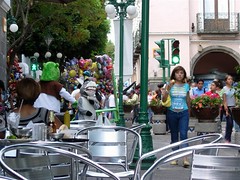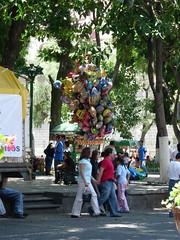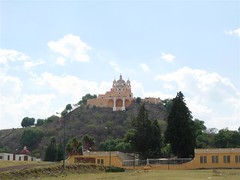Sex shops in the D.F.
I always find Spanglish interesting. I’ve mentioned the Spanglish in Mexican baseball before. In this case, I find it interesting that when Mexicans discuss stores that sell pornography and related sex toys, they call them (in English) “sex shops.” Strip bars are called “table dance,” again in English.
Why, exactly, are the names of these places of vice left in their English? Why are they not translated? If I were in a border town, I would think that it is because most of the sex shops and table dances cater to foreigners. In Mexico City, however, most tourists aren’t here for sex shops or table dances. Are the names of these places left in English in an effort to distance them from Mexican culture? Somehow, if we leave the name in English, it will imply that these stores and bars are not for us, but for them? I’m not sure, but I’d guess linguists would have an interesting interpretation.
This topic occurred to me because the leftist paper here has an article on the growing number of sex shops in the D.F. and their ambiguous legal status.
I thought I also might relate my own inadvertent visit to a sex shop in the D.F. Inadvertent, because I didn’t know that’s where I was going when I went there.
Last fall, when we moved to the D.F., I decided to try to buy a used couch. I called various people in the want-ads and talked to a nice woman who had a futon for sale. She gave me her address, which was nearby and not in a shady part of town at all. She mentioned that she lived above her store. That, also, did not seem unusual.
One Saturday morning, I walked to go look at the couch. The address turned out to be a sex shop. The first floor was movies and toys. The second floor was small numbered cabins. I could only imagine their use. She lived on the third floor in a small apartment with two pit bulls. She then mentioned that her futon had only been used as a bed, never as a couch. It did not have sheets when I saw it. I thanked her for her time and said I would have to discuss it with my husband. And quickly left.
My Mexican friends always find this story really funny. I’m not sure why. Maybe because they can’t imagine me in a place like that, and they like to embarrass me by having me tell the story to new friends.
In any event, this woman who owns the sex shop that I visited is apparently a rarity. According to the news article, most of those shops are owned by men.












